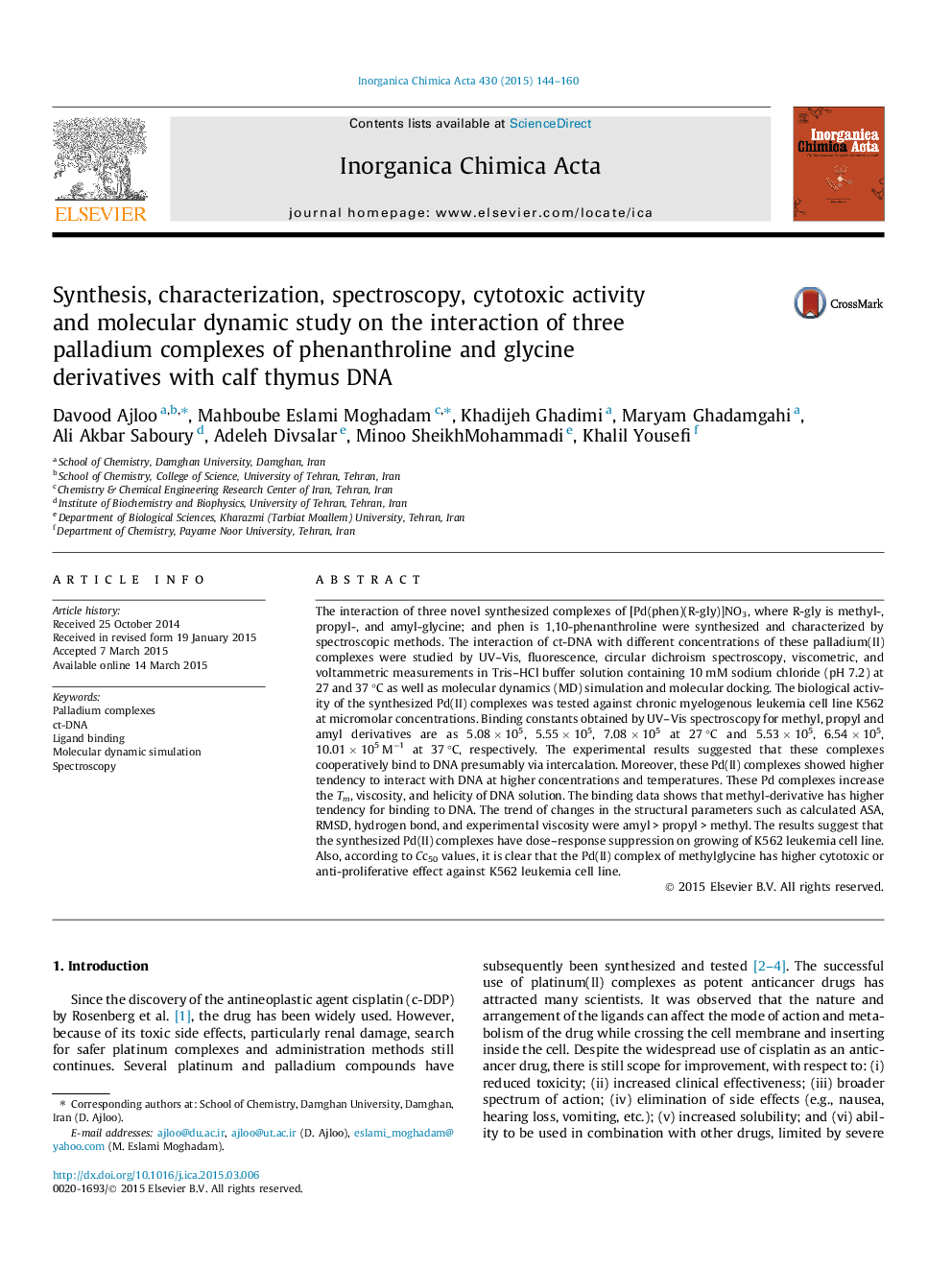| کد مقاله | کد نشریه | سال انتشار | مقاله انگلیسی | نسخه تمام متن |
|---|---|---|---|---|
| 1309120 | 1499159 | 2015 | 17 صفحه PDF | دانلود رایگان |

• Three new palladium complexes with different alkyl chains were synthesis and characterized.
• Interaction between cited complex and calf thymus DNA was investigated by different spectroscopy and computational methods.
• Intercalation mechanism of complexes and DNA was confirmed by experimental and molecular dynamics methods.
The interaction of three novel synthesized complexes of [Pd(phen)(R-gly)]NO3, where R-gly is methyl-, propyl-, and amyl-glycine; and phen is 1,10-phenanthroline were synthesized and characterized by spectroscopic methods. The interaction of ct-DNA with different concentrations of these palladium(II) complexes were studied by UV–Vis, fluorescence, circular dichroism spectroscopy, viscometric, and voltammetric measurements in Tris–HCl buffer solution containing 10 mM sodium chloride (pH 7.2) at 27 and 37 °C as well as molecular dynamics (MD) simulation and molecular docking. The biological activity of the synthesized Pd(II) complexes was tested against chronic myelogenous leukemia cell line K562 at micromolar concentrations. Binding constants obtained by UV–Vis spectroscopy for methyl, propyl and amyl derivatives are as 5.08 × 105, 5.55 × 105, 7.08 × 105 at 27 °C and 5.53 × 105, 6.54 × 105, 10.01 × 105 M−1 at 37 °C, respectively. The experimental results suggested that these complexes cooperatively bind to DNA presumably via intercalation. Moreover, these Pd(II) complexes showed higher tendency to interact with DNA at higher concentrations and temperatures. These Pd complexes increase the Tm, viscosity, and helicity of DNA solution. The binding data shows that methyl-derivative has higher tendency for binding to DNA. The trend of changes in the structural parameters such as calculated ASA, RMSD, hydrogen bond, and experimental viscosity were amyl > propyl > methyl. The results suggest that the synthesized Pd(II) complexes have dose–response suppression on growing of K562 leukemia cell line. Also, according to Cc50 values, it is clear that the Pd(II) complex of methylglycine has higher cytotoxic or anti-proliferative effect against K562 leukemia cell line.
Interaction of three new derivatives of palladium complexes with DNA was investigated by using UV–Vis, fluorescence, circular dichroism spectroscopy, viscometry, as well as molecular dynamics simulation and docking calculation. The complexes intercalate into DNA and more hydrophobe complex has more effect in binding and DNA structural changes as amyl > propyl > methyl.Figure optionsDownload as PowerPoint slide
Journal: Inorganica Chimica Acta - Volume 430, 1 May 2015, Pages 144–160